Celebs You Didn’t Know Were Triathletes
Ever wondered which of your favorite celebs share the love of triathlon with you??
The world of triathlon knows no bounds. With an estimate of 4 million people participating every year, the sport is constantly growing and adding new athletes to the mix. We see every type of person enter triathlons, but have you ever thought if any of your favorite stars are triathletes too? See if your favorite star made the list with these celebs that TRI!
1. Shawn Colvin

Image: Getty Images
Shawn Colvin is a Grammy award-winning artist that was bitten by the tri-bug back in 2001. “It’s true, once you do one of them you want to do more!” She regularly participates in triathlons all over the country and was even at the 2019 Kerrville Triathlon Festival where she sang the national anthem to kick-off Saturday and Sunday of race weekend! Colvin holds a special place in our hearts because she’s one of our very own.

Image: Noel Vasquez
2. James Marsden
James Marden is a well-rounded actor, known for his roles in 27 Dresses, Enchanted, and X-Men, is also a regular participant of triathlons all over the States. He is constantly keeping up with his training and participates in various triathlons every year to maintain his muscular physique. Marsden says triathlons are a great way to stay in shape year-round so he is camera-ready at all times. He even missed the 2017 Emmy awards because it conflicted with one of his triathlons!
3. Jennie Finch

Image: Matt Peyton
Jennie Finch is one of the best softball players the sport has ever seen. After retiring from her 11-year career earning her 2 Olympic medals, she hung up her cleats and traded them in for running shoes. She began by entering marathons before she participated in the 2013 New York City Triathlon as a way to get back in shape after her third child was born. She crossed the finish line of the Olympic-distance (we see what she did there) with an impressive time of 2:51:15!

Image: Clara Molden
4. Gordon Ramsay
Hell’s Kitchen’s overlord, Gordon Ramsay, took his skills out of the kitchen to participate in the 2013 Hawaii Ironman. Since then, Ramsay has competed in several marathons, half-ironman, and other races throughout his journey. The competitive environment of the events is what keeps him coming back year after year. He trains throughout the year to keep up with his physical condition alongside his wife, Tana.

Image: Jean Lacroix
5. Jennifer Lopez
Jennifer Lopez was inspired to begin her journey as a triathlete for a good cause. She participated in her first-ever triathlon at the Nautica Malibu Triathlon in 2008 to raise money for Children’s Hospital Los Angeles. New to the sport, she had to spend most of her time training for the swim portion. On race morning, her training certainly paid off with her finishing time being 2 hours, 23 minutes and 28 seconds!

Image: Gregg Deguire
6. Matthew McConaughey
Austin local Matthew McConaughey is no stranger to the sport, having completed several triathlons since his journey began. McConaughey started his journey in 2008 by completing an Olympic-distance tri. He showed off his athleticism by earning a time of 1:43:48. How would you like that for your first ever triathlon time?
7. Claire Holt

Image: Chris Polk
Best known for her role in the TV series The Vampire Diaries, Claire Holt was instantly hooked on triathlons. Like the other star triathletes, Claire Holt is a regular participant of the celebrity division at the Nautica Malibu Triathlon. Once she discovered her love for the sport, she found herself returning every year with the goal of improving her performance! She achieved her goal at the 2012 event by taking home first place with a time of one hour and 44 minutes.

Image: Noel Vasquez
8. Joel McHale
Joel McHale is the newest celeb to become a triathlete. He was especially impressed with his defeat of fellow triathlete and star, James Marsden, during the run portion of the race. He plans on returning to race triathlon again next year and plans on recruiting other celebs to join him!
9. Megyn Price

Image: Chelsea Lauran
Rules of Engagement star, Megyn Price, started her triathlon career because she wanted to have a goal that would test her physical strength. She finds it important for females to have goals that are based on something more than how you look. Her efforts paid off when she took home first place at a 2010 triathlon with a time of 2:10:23, just 3 years after her first tri! Way to go!

Image: Jamie Squire
10. Brendan Hansen
Brendan Hansen is best known for his professional swimming career. During all the chaos of winning 6 Olympic medals, breaking world records left and right, and starting a family, Hansen managed to find time to become a triathlete! Hansen competed alongside our Rookie Triathletes in 2010 and continues to participate in triathlons in and around Austin, Texas. When asked about his triathlon journey, Hansen told The Orange County Register, “Triathletes are great. They’ve got a screw loose, the way they train. But at the finish line, there is a beer tent. How great is that?” We couldn’t have said it better ourselves!
These folks may be superstars, but at the end of the day, their triathlon journey started just like everybody else. Maybe we can invite them to join us on the course this May with the CapTexTri!

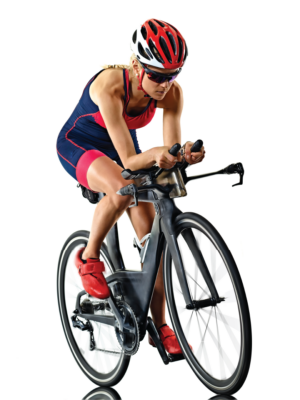
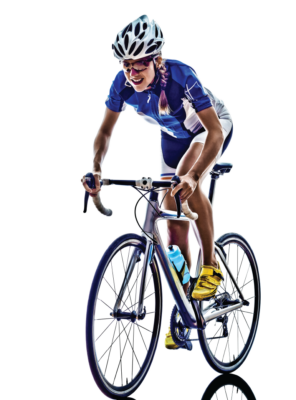
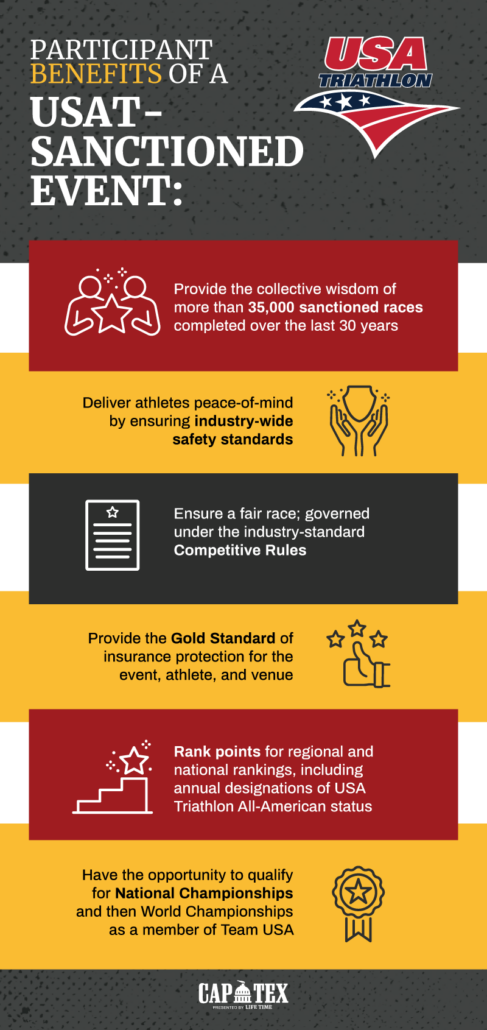


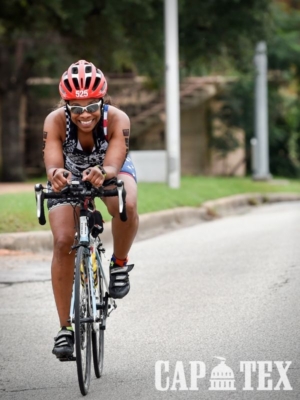
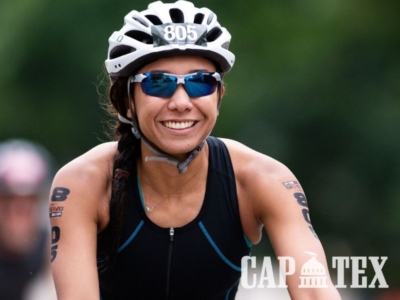 Clearer view
Clearer view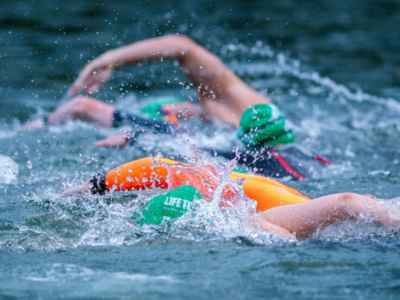
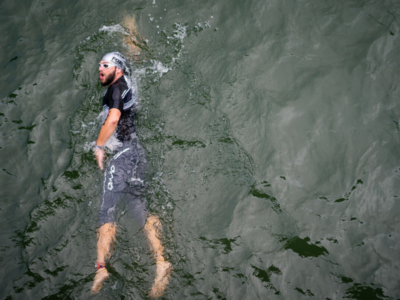 2 x 25 over-exaggerated flutter kick (with kickboard)
2 x 25 over-exaggerated flutter kick (with kickboard)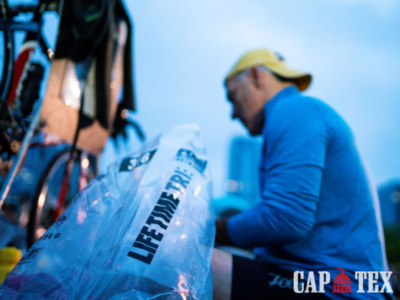
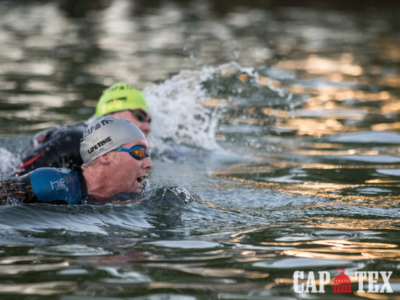 To avoid swimming a further distance during your tri, sighting is an essential race day skill you should practice before an open-water swim. You need to look where you’re going every few strokes to make sure you are staying within the buoys. The best method of sighting is to incorporate glancing forward before you go to take a breath. It is recommended to sight every 2 – 3 strokes, but in order to find what works best for you, you will just have to practice. Pro tip: Look at the swim course before-hand to see if the course goes clockwise or counter-clockwise, then you’ll know to stay on the right or left side of the buoys.
To avoid swimming a further distance during your tri, sighting is an essential race day skill you should practice before an open-water swim. You need to look where you’re going every few strokes to make sure you are staying within the buoys. The best method of sighting is to incorporate glancing forward before you go to take a breath. It is recommended to sight every 2 – 3 strokes, but in order to find what works best for you, you will just have to practice. Pro tip: Look at the swim course before-hand to see if the course goes clockwise or counter-clockwise, then you’ll know to stay on the right or left side of the buoys.